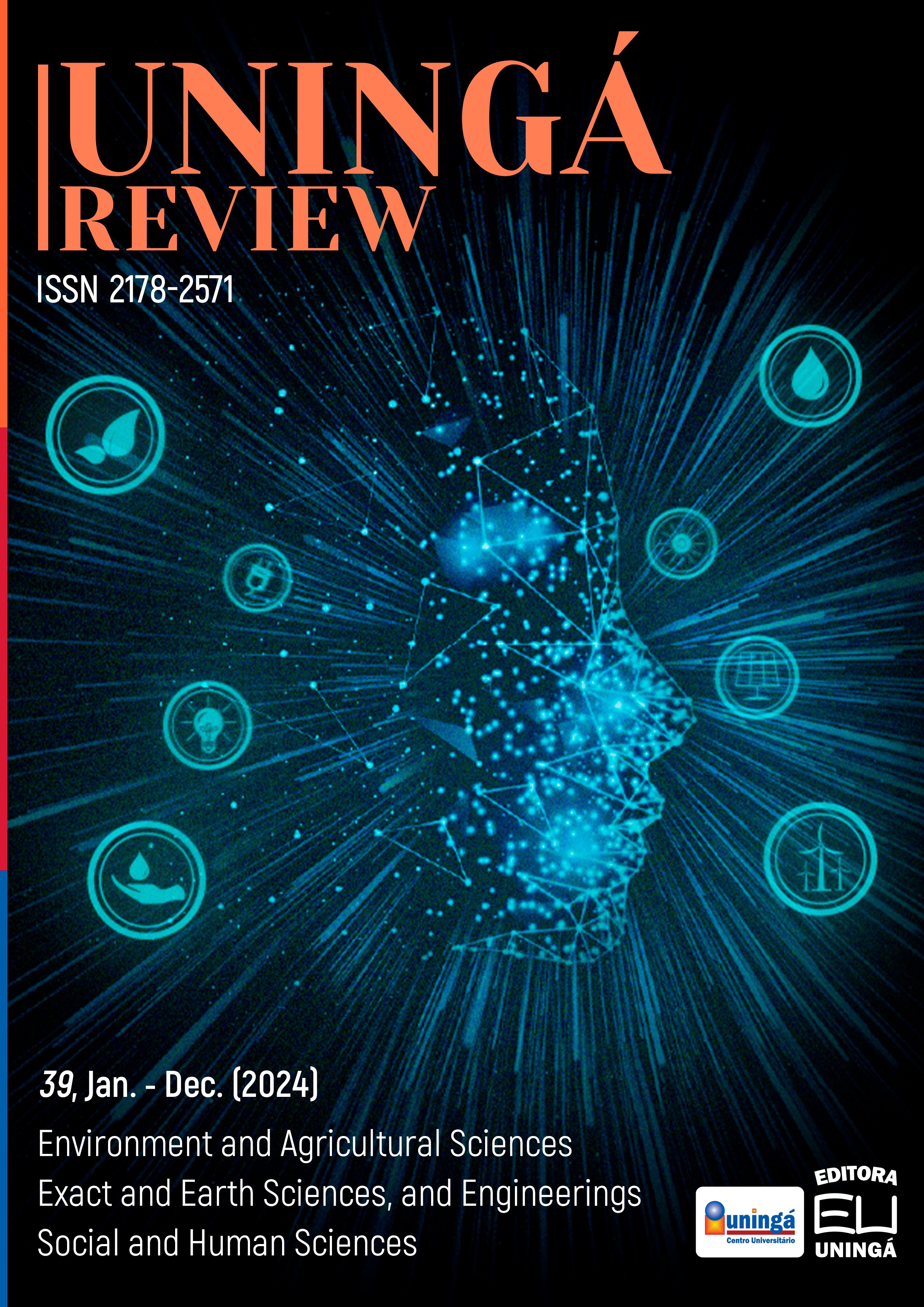Lumbosacral osteoarthritis in lioness (Panthera leo)
DOI:
https://doi.org/10.46311/2178-2571.39.eURJ4691Keywords:
Arthrosis, Captivity, Felines, Orthopedics, RadiologyAbstract
Osteoarthritis is a chronic disorder that deteriorates articular cartilage and periarticular structures, being a major cause of joint pain in elderly felines. Cats frequently develop arthritis due to aging, obesity, and a sedentary lifestyle – factors that are common in captivity. Therefore, arthritis in wild felines can be considered to be triggered by the same factors, given the similar physiology of domestic cats (Felis catus) to other members of the Felidae family. This study aimed to report a case of lumbosacral osteoarthritis in a lioness (Panthera leo). The 20-year-old animal from the Americana Ecological Park in São Paulo showed signs of apathy and hyporexia and was sent to the Veterinary Hospital of Americana College (FAM) for a check-up. The complete blood count was normal, while the biochemical profile showed slight hypoalbuminemia and a significant increase in amylase. Ultrasound revealed subtly irregular kidney contours. Endoscopy showed hyperemia in the respiratory tract and polypoid nodules in the nasopharynx. The larynx had bilateral subglottic ulcers, and the bronchi exhibited malacia and bronchial ring fractures. Radiography showed mineralization processes of the sternocostal joints and xiphoid luxation. In the spine, there were enthesophytes in vertebrae, ankylosing bridges, intervertebral foramen opacification, loss of articular facet definition, vertebral body remodeling, and mineral radiopaque structures overlaying the spinous processes. Therefore, it is concluded that due to genetic and evolutionary proximity, attention should be paid to signs of arthritis in wild felines as predisposing factors common in captive environments, along with advanced age, may trigger osteoarthritis similar to that of domestic felines.
Downloads
References
Adania, C, H., Silva, J. C. R., & Felippe, P. A. N. (2014). Carnivora – Felidae (Onça, Suçuarana, Jaguatirica e Gato-do-mato). In Cubas, Z. S., Silva, J. C. R., & Catão-Dias, J. L. (ed.), Tratado de Animais Selvagens - Medicina Veterinária (v. 1, 2nd ed., pp. 779-818). Rio de Janeiro, RJ: Grupo GEN.
Barton, L. (2022). Radiographic characteristics and clinical presentation of DJD in captive cheetahs (Acinonyx jubatus), lions (Panthera leo) and tigers. [PhD Thesis, Sydney School of Veterinary Science, Faculty of Science, University of Sydney].
Denny, H. R., & Butterworth, S. J. (2006). Cirurgia ortopédica em cães e gatos, (4th ed., pp. 39-48). São Paulo, SP: Roca.
Eloff, F. C. (1998). The life of the Kalahari lion (Panthera leo vernayi). Transactions of the Royal Society of South Africa, 53(2), pp. 267–269. doi: 10.1080/00359199809520393 DOI: https://doi.org/10.1080/00359199809520393
Felippe, P. A. N., & Adania, C, H. (2014). Conservação e Bem-estar Animal. In Cubas, Z. S., Silva, J. C. R., & Catão-Dias, J. L. (ed.), Tratado de Animais Selvagens - Medicina Veterinária (v. 1, 2nd ed., pp. 2-9). Rio de Janeiro, RJ: Grupo GEN.
Fujita, Y., Hara, Y., Nezu, Y., Yamaguchi, S., Schulz, K. S., & Tagawa, M. (2005). Direct and indirect markers of cartilage metabolism in synovial fluid obtained from dogs with hip dysplasia and correlation with clinical and radiographic variables. American Journal of Veterinary Research, 66(12), pp. 2028-2033. doi: 10.2460/ajvr.2005.66.2028 DOI: https://doi.org/10.2460/ajvr.2005.66.2028
Jericó, M. M., Andrade, J. P. D. A., Neto, & Kogika, M. M. (2023). Tratado de Medicina Interna de Cães e Gatos (2nd ed.). Rio de Janeiro, RJ: Grupo GEN.
Junginger, J., Hansmann, F., Herder, V., Lehmbecker, A., Peters M., Beyerbach, M., Wohlsein, P., & Baumgärtner, W. (2015). Pathology in Captive Wild Felids at German Zoological Gardens. Public Library of Science, 10(6). doi: 10.1371/ journal.pone.0130573 DOI: https://doi.org/10.1371/journal.pone.0130573
Mele, E. (2007). Epidemiologia da osteoartrite. Veterinary Focus, 4th ed., 17(3), pp. 1-7. DOI: https://doi.org/10.1055/s-0034-1381772
Nicholson, S., Bauer, H., Strampelli, P., Sogbohossou, E., Ikanda, D., Tumenta, P. F., Venktraman, M., Chapron, G. & Loveridge, A. (2023). Panthera leo. The IUCN Red List of Threatened Species, p. 30. https://dx.doi.org/10.2305/IUCN. UK.2023-1.RLTS.T15951A231696234.en
Nowell, K., & Jackson, P. (1996). Wild cats: conservation status and species action plan. Gland, Switzerland: IUCN.
Owston, M. A., Ramsay, E. C., & Rotstein, D. S. (2018). Neoplasia in Felids at the Knoxville Zoological Gardens. Journal of Zoo and Wildlife Medicine, 39(4), pp. 608-613. doi: 10.1638/2008-068.1 DOI: https://doi.org/10.1638/2008-068.1
Thrall, D. (2019). Veterinary Diagnostic Radiology (7th ed.). St. Louis, MO: Elsevier Sounders.
Tidière, M., Gaillard, J.-M., Berger, V., Müller, D. W. H., Lackey, L. B., Gimenez, O., Clauss, M., & Lemaître, J.-F. (2016). Comparative analyses of longevity and senescence reveal variable survival benefits of living in zoos across mammals. Scientific Reports, 6. doi: 10.1038/srep36361 DOI: https://doi.org/10.1038/srep36361
Trinkel, M., & Angelici, F. M. (2016). The decline in the lion population in Africa and possible mitigation measures. Problematic wildlife, pp. 45-68. doi: 10.1007/978-3-319-22246-2_4 DOI: https://doi.org/10.1007/978-3-319-22246-2_3
Published
How to Cite
Issue
Section
License
Copyright (c) 2024 Eduardo Augusto Terra Rossi de Barros, Paulo Fernandes Marcusso, Giovanna Valverde Magalhães Barbosa, Henrique Scomparin Guardia, Sônia Rumiko Suzuki França, Giovani Dal'Bó, Michelle Falcade Forti, Guilherme Guindolin Galassi, Fábio Henrique Viaceli Conforti, Daniela Pereira Bonini, Renato Leite Leonardo, Renata Paulino Xavier, Luciana Facco de Andrade, Everton dos Santos Cirino, Jorge Aparecido Salomão Júnior

This work is licensed under a Creative Commons Attribution 4.0 International License.
I declare/we declare that the text submitted here is original, of my own authorship and does not infringe any type of third party rights. The content is my/our sole responsibility. Possible research involving animals and/or human beings is in accordance with Resolution 196/96 of the National Health Council and its complements. I declare that I am/we are in possession of the written consent of patients and that the research and its procedures were timely and adequately approved by the Ethics Committee of the institution of origin. We further declare that all institutional affiliations and all sources of financial support for the work are duly informed. I certify that there is no commercial or associative interest that represents a conflict of interest related to the submitted work. If there is commercial interest, in addition to the technical and academic ones, in the publication of the article, the information will be reported during the text.







































